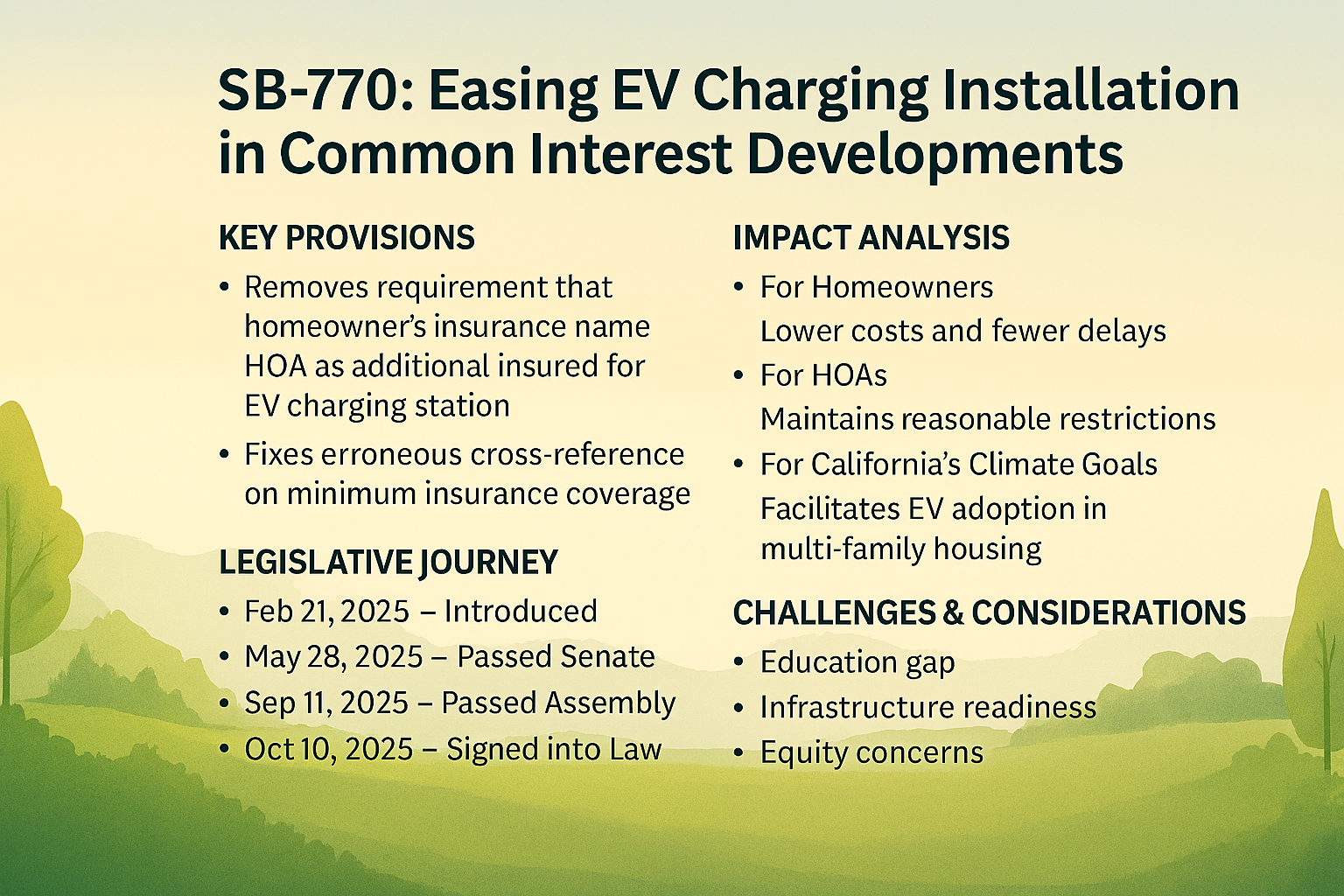Overview:
Signed into Law on 10 October 2025, SB-770 updates California’s Davis-Stirling Common Interest Development Act to make it easier for homeowners in condominiums and planned communities to install electric vehicle (EV) charging stations. This change aligns with California’s aggressive climate goals and zero-emission vehicle mandates.
Why SB-770 Matters
- California aims for 100% zero-emission new vehicle sales by 2035.
- Many residents live in common interest developments (CIDs)—condos, co-ops, and planned communities—where HOA rules often complicate EV charger installation.
- The previous Law required homeowners to provide insurance naming the HOA as an additional insured, creating cost and administrative hurdles.
Key Provisions
1. Insurance Requirement Removed
o Eliminates the mandate that a homeowner’s insurance policy name the HOA as an additional insured when installing an EV charging station in a common or exclusive-use area.
2. Technical Correction
o Fixes an erroneous cross-reference regarding minimum insurance coverage amounts.
3. Preserves HOA Oversight
o HOAs can still impose reasonable restrictions on EV charging stations, provided they do not:
§ ▪ For example, HOAs can require that the charging station be installed in a specific location or that it meet particular safety standards. Significantly increase installation cost
§ Reduce charging efficiency or performance
Legislative Journey
- Introduced: 21 February 2025
- Passed Senate: 28 May 2025 (28–10)
- Passed Assembly: 11 September 2025 (55–20)
- Signed into Law: 10 October 2025 (Chapter 525, Statutes of 2025)
Impact Analysis
For Homeowners
- Lower costs and fewer delays for EV charger installation.
- No need to purchase additional insurance endorsements for HOA coverage.
For HOAs
- Maintains the ability to enforce reasonable design and safety standards.
- Reduces the administrative burden of tracking additional insured certificates.
For California’s Climate Goals
- Facilitates wider EV adoption in multifamily housing, which is critical for meeting emissions targets.
Challenges & Considerations
- Education Gap: HOAs and homeowners need clear guidance on updated rules.
- Infrastructure Readiness: Electrical capacity upgrades may still be required in older buildings.
- Equity Concerns: Ensure low-income Condo owners can access rebates and incentives for EV charger installation.
Compliance Tips for HOAs
- Update governing documents to reflect the changes made by SB-770.
- Publish installation guidelines that meet state Law and local building codes.
- Coordinate with licensed electricians for safe installations.
Bottom Line
SB-770 removes a key barrier to EV adoption in California’s common interest developments. By eliminating unnecessary insurance requirements, the Law streamlines charger installation while preserving HOA oversight. This is a small but strategic step toward California’s zero-emission future.
